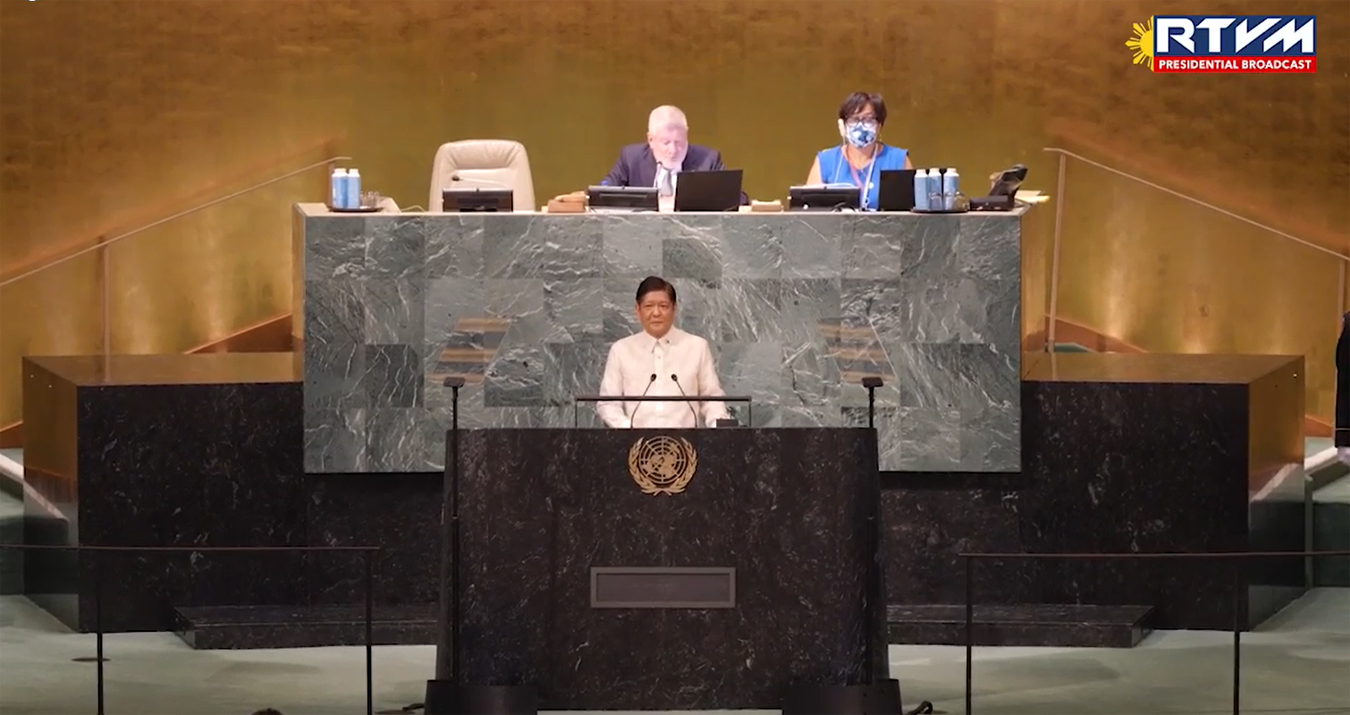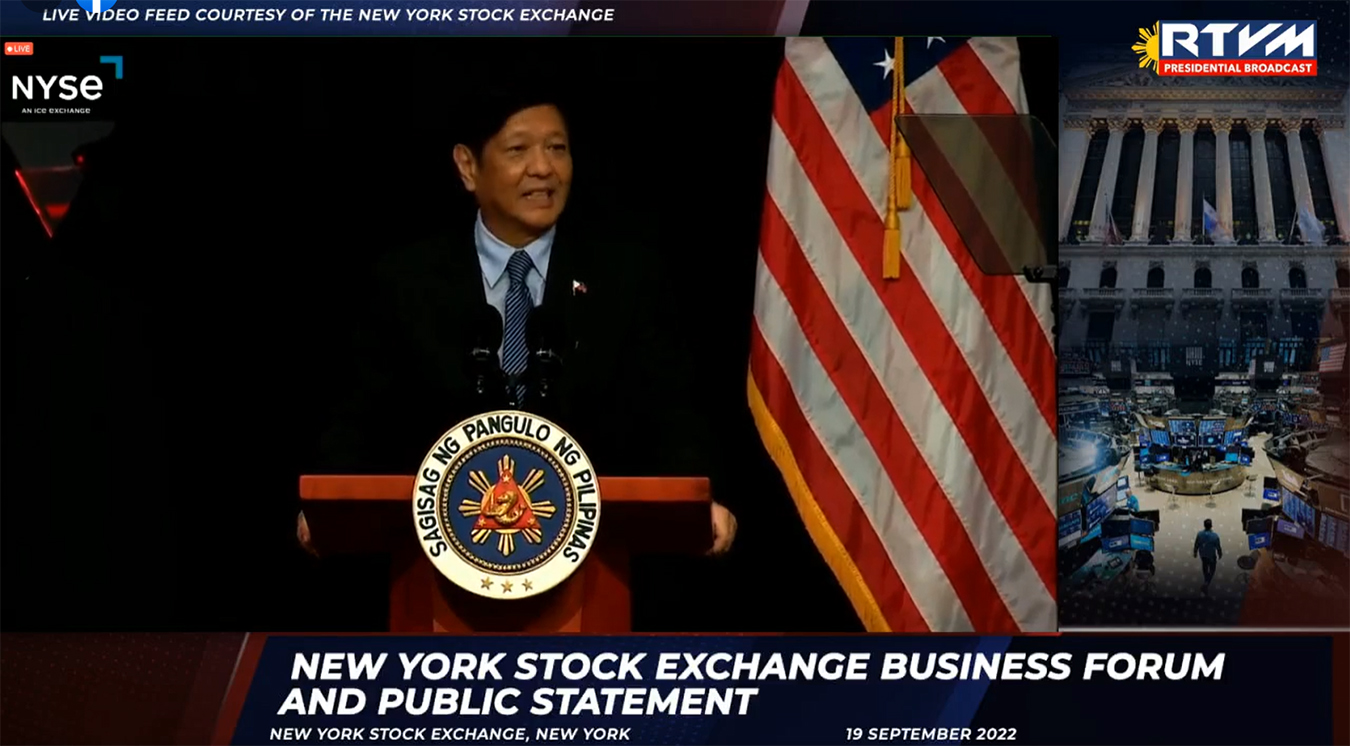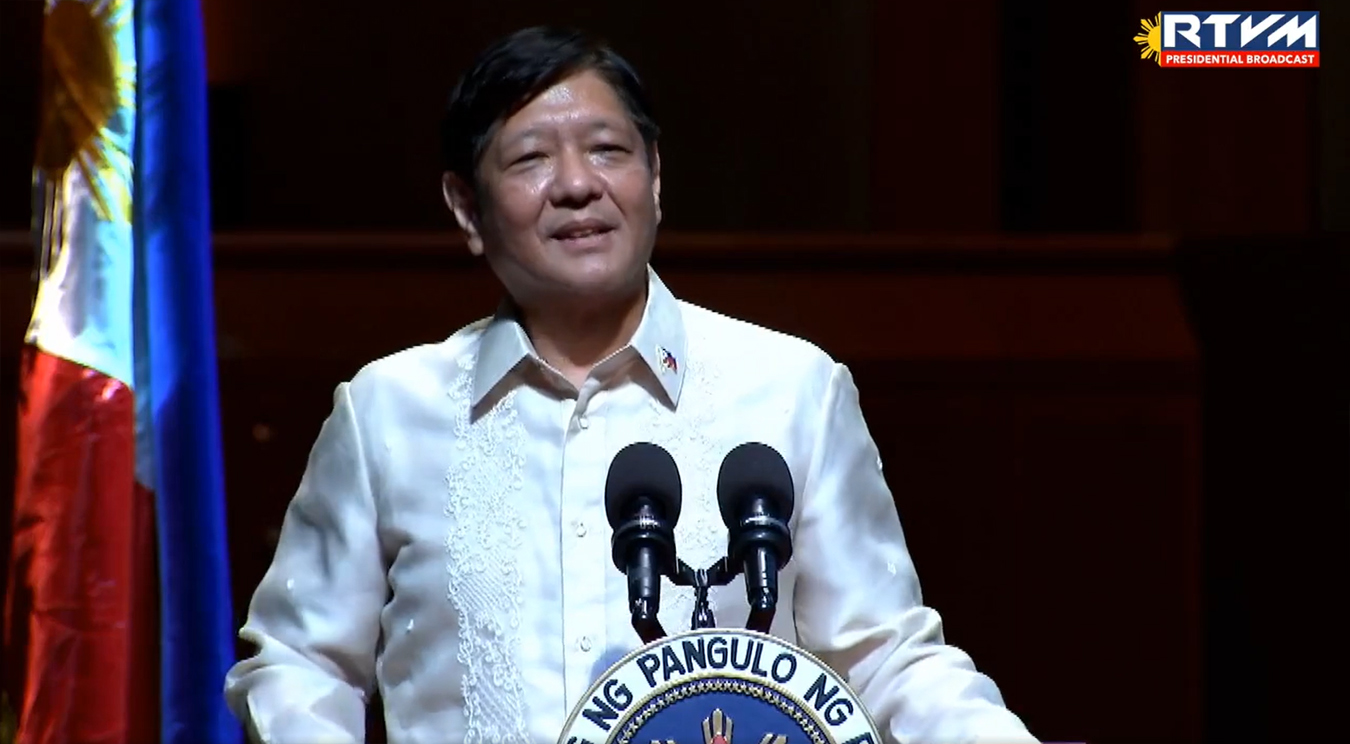Thank you very much to our Ambassador for performing his single job remarkably well. [applause]
The Finance Secretary who is leading the economic team of the Philippines as we go into this new era of the new global economy. Finance Secretary Ben Diokno and the other members of the Cabinet who you will be meeting later on. The House Speaker, Speaker of our House of Representatives, Speaker Ferdinand Martin Romualdez — the similarities in our name are entirely coincidental by the way. [laughter]
Thank you very much for the welcoming remarks of the Bank America Executive Vice Chairman of International Corporate and Investment Mr. James Quigley; all the distinguished guests; the members of our delegation; the members of — especially the private sector participants in this briefing; all the distinguished guests; ladies and gentlemen.
As I walked in I said well this is a very fine start to the day as we have a completely full house. [laughter] And for that, I thank you for your continuing interest in the Philippines, which we are touting as with great confidence as Asia’s fastest rising economic star. [applause]
The United States and the Philippines have had long, strong, and enduring ties in trade, commerce, development, and in all other aspects of relationships between two sovereign nations.
As today, the US is our third largest trading partner and fourth major source of foreign direct investment. As we slowly rebuild the Philippine economy for rapid growth, we have created an even wider space for mutually beneficial investments. The Philippines is a reliable host for international partnerships. The country’s favorable business climate is shored up by the sound macroeconomic fundamentals and a clear roadmap for economic recovery and sustained growth.
The country is on its way to a strong recovery from the pandemic and a robust road-based growth in the next six years. In fact, our projected economic performance in the medium term is expected to surpass our regional neighbors.
To secure the Philippines’ bright economic future, my government will swing the doors even wider for high-value investments from both the domestic and international business communities with a sharp focus on broad-based job creation, the expansion of digital infrastructure, research and development.
More investments mean higher economic activity, and more quality jobs, and then a better life for Filipinos. We have formulated a comprehensive eight-point socioeconomic agenda that aims to dramatically cut poverty incidence and elevate the country to upper-middle-income status.
Our socioeconomic agenda charts out the government’s policy and its different directions that will be used to tackle both near- and medium-term priorities.
In the near term, we will address the impact of growing inflationary pressures due to rising global prices of key commodities such as food and fuel. We will ensure domestic food security by boosting local food production and continue the provision of targeted support for sectors most affected by the rise in fuel prices.
In the medium term, we will bolster job creation by intensifying investments in infrastructure and human capital development. And certainly, it is important that we exercise fiscal prudence in the fulfillment of this agenda.
To this end, we are implementing the country’s first-ever medium-term fiscal framework. This is a fiscal consolidation strategy that will secure the fiscal stability of our macroeconomic fundamentals. Later on in the discussion, we can certainly go into a good deal more detail.
We will continue our high investments in public infrastructure by harnessing our public private partnerships mechanism. We will improve the interconnectivity of our transport networks by fast tracking the development and enhancement of our railway systems, our airports, seaports, and road infrastructure.
We will focus on agriculture as a strong driver for growth. An efficient and modern agriculture sector will ensure food security for all and reduce poverty incidence.
We will also reinvigorate the tourism sector by investing in travel infrastructure and the promotion of the Filipino brand. With the Department of Tourism leading our efforts to revitalize both domestic and foreign tourism, we will ensure the safe reopening of tourist destinations and develop the Philippines’ yet-to-be-discovered attractions.
And therefore, we invite strategic investors from the United States to take part in this Philippines economic resurgence. Key structural reforms have been set into place to allow for wider participation in our industries. With the Corporate Recovery and Tax Incentives for Enterprises Act or what we refer to as CREATE and the economic liberalization measures, we have expanded the space for foreign investments in previously protected sectors, especially those that employ advanced technologies and research and development activities.
The panel discussions led by the economic team today will provide you with a fuller and more detailed view of this roadmap for the Philippine economy in the next few years.
It is our belief that the Philippines is the smart investment choice and the best time to do business with us is now. We have grand opportunities, the timing, the window of opportunities for investment and especially in capital intensive investments in the Philippines which is what we need now. We believe the time is now.
Thank you very much for your continuing interest and thank you very much for joining us at this briefing. And I am sure that it will be useful for both from the Philippine side — and the government side and in the private sector side and for our potential US investors.
I look forward to seeing you all as we open your businesses back in the Philippines. Thank you and good morning. [applause]
— END —
Watch here: Philippine Economic Briefing




